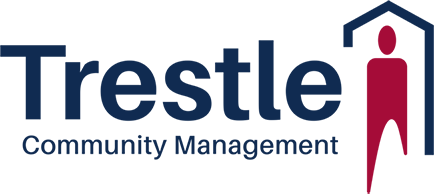Homeowner vs Association Responsibility
Washington State HOAs and Condos are subject to several different statutes, depending on when and how the Association was incorporated. The statutes, as well as the Association’s governing documents, outline the responsibilities assigned to the community and its Homeowner members.
Washington’s Community Association Acts

HOA and Condo Associations serve to create a community for Homeowners. Pooling resources and utilizing centralized maintenance through the Board of Directors and other volunteers, Associations can maintain an appealing aesthetic, create a sense of community, and help Homeowners retain and increase their home values.
In Washington State, Community Associations, also known as Common Interest Ownership Associations, are corporations, often subject to the Washington State Nonprofit Corporation Act (Nonprofit Act). In addition, Associations are incorporated under one of four common interest ownership acts in Washington State and each Homeowner within the Association is considered a member as soon as they purchase a home.
As a corporation, each community must abide by the Community Association Act it was incorporated under as well as the Association’s governing documents recorded with the State and the Nonprofit Corporation Act, if applicable. The applicability of each act depends on the date and way in which the Association was incorporated.
The four acts are:
- The Homeowners Association Act (HOA Act),
- The Horizontal Properties Regimes Act (Old Act),
- The Condominium Act (New Act), and
- The Washington Uniform Common Interest Ownership Act (WUCIOA).
Previously, an Association could be incorporated under any active Community Association act. However, with the passage of WUCIOA, all communities incorporated after July 1, 2018, fall under the new Act.
The Role of Governing Documents
Communities are often incorporated at the time of development by the builder, but some are incorporated later down the road, in the case of a rental unit community which is converted to an Association.
Each Common Interest Ownership Act in Washington State outlines different responsibilities and protections for the Association and Homeowners. A community’s Articles of Incorporation and Bylaws typically include details outlining to which act an Association is subject.
Once an Association has been incorporated, responsibility is better defined, which allows the community to prepare its other governing documents. An established Association may have many community-specific governing documents, such as Rules and Regulations. These are designed to complement the other governing documents and provide further detail and guidance.
Each community starts with same core documents:
- Articles of Incorporation – typically documents the legal creation of the Association as a corporation,
- Bylaws – often establish the rules which define the innerworkings of the Association, such as Board of Director eligibility, positions, terms, and election processes, and
- Declaration – usually define maintenance responsibility, and outline which elements belong to the Homeowners, and which belong to the Association.
All community documents are available to Homeowners on Trestle’s My-Community Web Portal so they may better understand their rights and responsibilities.
Homeowner vs. Association Responsibility
The responsibilities assigned to Associations and Homeowners vary among communities. However, Associations are commonly tasked with administrative responsibilities such as preparing annual budgets, collecting Homeowner assessments, and paying Association expenses.
Beyond administrative responsibilities, there are three areas within a community which have defined maintenance responsibility assigned to Homeowners or the Association:
- Common elements or areas – an item or area accessible to most, if not all, Homeowners within the community. This may include items like roads, play structures, mailbox kiosks, pools, or clubhouses,
- Limited common elements or areas – an item or area designated to be used by one or more unit or lot but not accessible to all Homeowners. This may include items like plumbing lines or exterior windows and doors, and
- Units or lots – an area designated for the sole use of the Homeowner. The boundaries of the unit or lot are typically defined in the Declaration and vary among communities. Some encompass the entire home, including exterior siding and roofs, while others may end at interior drywall.
While each Homeowner pays assessments to the Association, these assessments are established for common expenses which affect all Homeowners. Common expenses can include items such as utilities, insurance, and landscaping, as well as common element or area maintenance. Limited common elements are typically visible to the exterior or directly linked to a common element. As a result, the Association has a vested interest in maintaining these items in order to preserve community appearance and safety. However, as these elements benefit fewer than all Homeowners within an Association, the expense of their maintenance is often passed along to the affected Homeowners.
It is important for Homeowners to know what they are required to maintain within the community and where the Association’s responsibilities lie. Understanding the difference between Homeowner and Association responsibility can help Homeowners avoid conflict and delayed maintenance. To better familiarize yourself and the residents of your home with the responsibilities assigned within your community, please review your community’s governing documents available through Trestle’s My-Community Web Portal or contact your Community Association Manager for assistance.
Connecting with Trestle
Trestle regularly connects on LinkedIn, Facebook, and Twitter, and can be contacted through its website or at (425) 454-6404.



